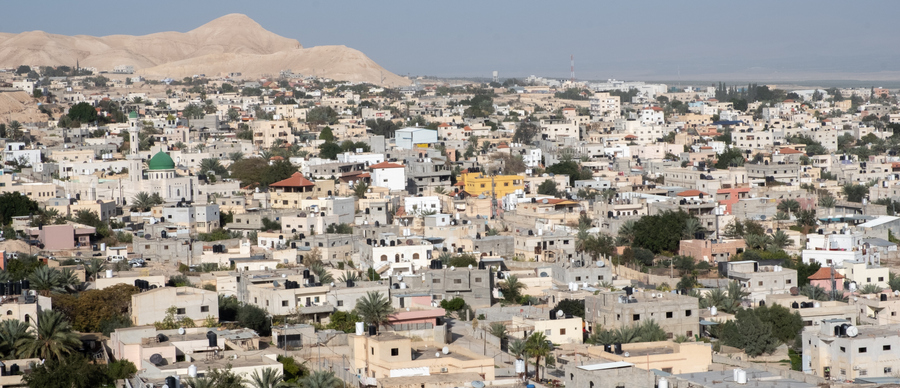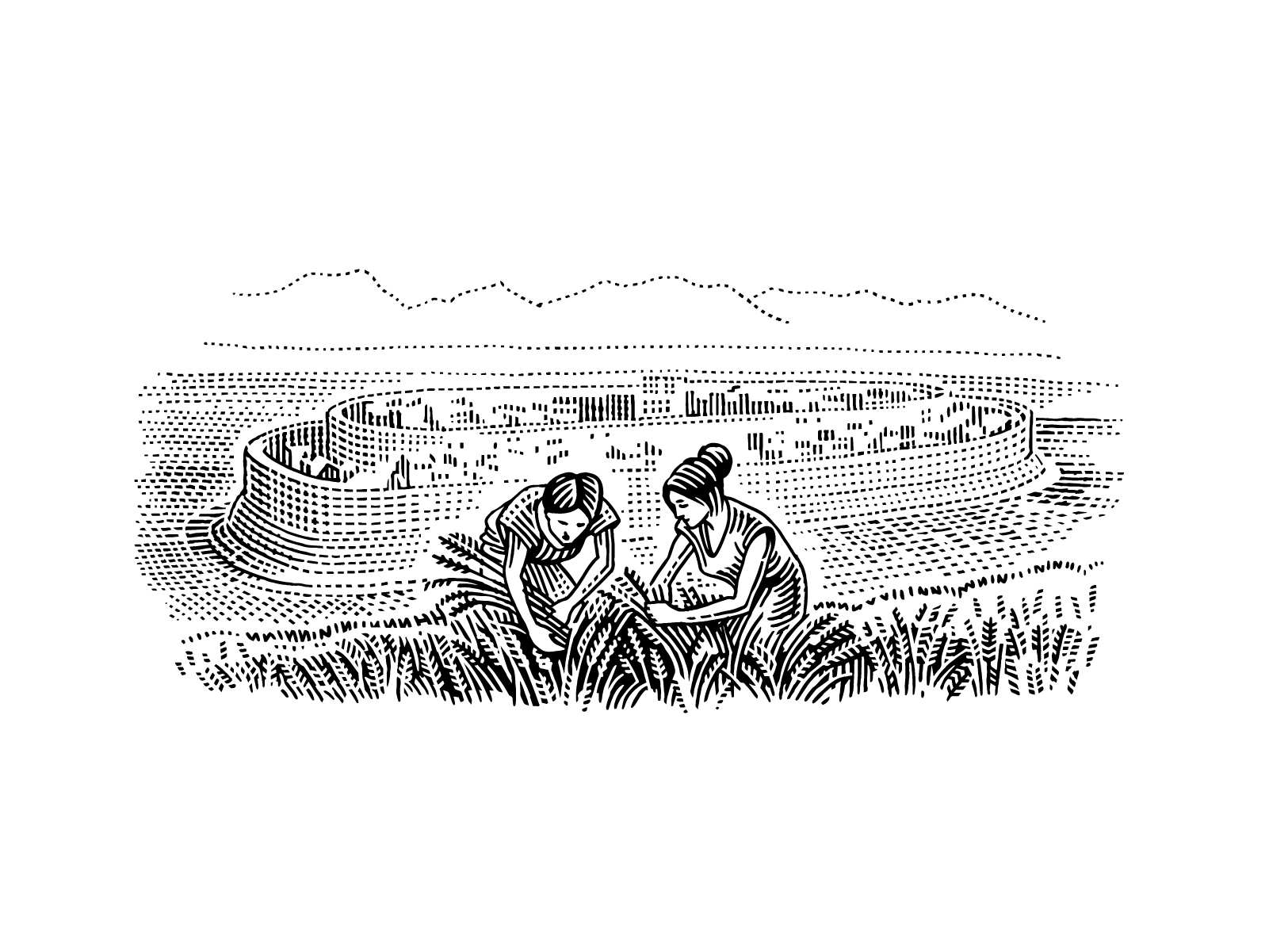Today marks the launch of a new series of articles by HumanProgress.org called Centers of Progress. Where does progress happen? The story of civilization is in many ways the story of the city. It is the city that has helped to create and define the modern world. This bi-weekly column will give a short overview of urban centers that were the sites of pivotal advances in culture, economics, politics, technology, etc.
Our first Center of Progress is Jericho. Jericho is thought by many scholars to be the world’s oldest city. It was first settled sometime around 9000 BC. The people who lived in Jericho and surrounding areas may have been among the first humans to give up their hunter-gatherer ways, domesticate plants and become farmers.
The invention of agriculture, often called the First Agricultural Revolution or the Neolithic Revolution, was a decisive turning point in our species’ history. It dramatically changed the way that we live. By producing a surplus of food that could be stored for difficult times ahead or traded for other goods, agriculture ultimately allowed for far greater prosperity than hunting and gathering ever could.
Today, Jericho is a tourist-oriented city in the Jordan River Valley and is frequented by religious pilgrims and history buffs. It is relatively small, with a population of just over 20,000 people. The city is located in a natural oasis in the desert, thus earning its nickname in the Hebrew Bible—the City of Palm Trees. The city is home to various cafes selling shawarma and falafel, as well as many historic ruins. Jericho is also the site of near-constant archeological digs, as we try to deepen our knowledge of the city’s past.
If you were to visit Neolithic Jericho, you may have been able to observe two decisive events in the history of civilization: permanent settlement and the beginnings of agriculture.
Imagine a group of hunter-gatherers—dubbed “Natufians” by today’s archeologists—walking through the wilderness. They would have carried hunting weapons such as spears, and they would have worn leather made from the hides of mountain gazelles and beaded jewelry made of gazelle bones. They would have carried food and supplies in baskets and animal skins. They would also have had domesticated dogs walking alongside them, perhaps looking something like the modern-day basenji hound.
You would have seen them coming upon a natural oasis bursting with freshwater springs in the middle of the wilderness and settling down to rest. You would have watched this group of hunter-gatherers coming to a momentous decision as they resolved, perhaps after some spirited discussion in a long-dead language, to build a permanent camp at the oasis and end their nomadic wanderings.
Of course, the decision was probably gradual, with the Natufians camping out at the oasis for longer and longer periods each year, until the settlement became their home year-round. But at some point, the decision was made to remain there permanently. In any case, the Natufians built a number of semi-subterranean oval-shaped stone dwellings to form a village that would grow into the world’s first city. Thus the story of Jericho began.
The first people to inhabit what would become Jericho had long survived by hunting animals such as gazelles, and eating wild cereals and other wild plants. But a shift in the climate, which became less rainy and more desert-like, may have helped to prompt a change in the Natufian survival strategy.
How did that happen? Maybe the Natufians noticed that edible plants sprouted in places where those plants’ seeds had been scattered before. Perhaps inspired by that observation, an enterprising individual (or multiple individuals) must have, at some point, proposed deliberately planting the seeds of the plants that the Natufians ate. When the Natufians began to plant seeds intentionally, they set humanity on a new course.
The Natufians are often called the first farmers. Although there is no expert consensus on precisely where in the Fertile Crescent agriculture first appeared, Jericho was certainly among the earliest communities to practice agriculture. The oldest archaeological remains of domesticated barley, rye and early forms of wheat are found in human Neolithic sites in the Fertile Crescent, such as the Natufian settlement where Jericho is today. Evidence of domesticated figs has also been found near Jericho dating to around 9400 BC.
The world’s first farmers were patient and innovative. Consider wheat. They discovered how to selectively breed wild emmer grass so that the plant’s seeds would not fall off of its stalks when the grass became ripe, making collection of the seeds far easier. They used the seeds to make bread, and what started as just another kind of grass, gradually became what we now know as wheat. Today, according to Yale University, twenty percent of the world’s total calorie consumption comes from wheat.
Researchers disagree as to how much credit ought to be given to the conscious efforts of the early farmers. “One controversy in this area is about the extent to which ancient peoples knew they were domesticating crops,” noted University of Sheffield plant scientist Colin Osborne. “Did they know they were breeding domestication characteristics into crops, or did these characteristics just evolve as the first farmers sowed wild plants into cultivated soil, and tended and harvested them?” he continued.
In addition to bread, the Natufians also enjoyed beer and some researchers believe that the production of alcoholic beverages made from fermented cereals may have served as one of the motivations underlying early agriculture.
Whatever their motivation, the first Jerichoans became farmers, and were thus able to produce enough food to eventually leave their old hunter-gatherer lifestyle behind. Selectively breeding plants would prove to be a painstakingly slow process, and perhaps for centuries the people of Jericho may have continued to supplement their agricultural food production with hunting and gathering.
As agriculture advanced, the people still hunted gazelles and other game animals, but the grains they planted, harvested and stored yearly increased their food security. One day, there was no longer any need to forage for wild plants, beginning a new chapter in human history.
Over the centuries, the residents of Jericho became increasingly adept at farming. The Jerichoans went on to cultivate many other plants and develop an irrigation system, and their harvests grew larger. They soon had enough food to store for lean times and to trade. But with such productivity came a danger—the threat that nearby nomadic tribes would raid the city and rob Jericho’s granaries with their large stores of food.
To fend off raiders, the people of Jericho built the oldest known protective wall in the world, perhaps dating to around 8000 BC. At that point, Jericho’s population had probably reached 2,000 people or so. For perspective, that’s about as many people as the current population of the rural town of Victor, Idaho. For its time, however, Jericho must have felt like a bustling metropolis. (Recall that there were fewer than 10 million people in the entire world back then, roughly equivalent to the current population of Portugal).
Producing a surplus of food allowed for some specialization of economic activities: not everyone had to be a farmer, freeing people to pursue other projects. The wall’s construction could not have been accomplished without some degree of specialization. The stone wall stood over 11 feet high, and in addition to defending the city, the wall may also have served to protect the city from floods.
There is some evidence that the wall’s accompanying 28-foot-high cone-shaped stone tower, also built around 8000 BC, served a symbolic purpose rather than a practical one. The tower is not well-positioned to serve as a defensive lookout. But computer models show that back when the tower was built, the nearby mountains would cast a shadow on it just as the sun set on the longest day of the year—the summer solstice. The shadow would fall precisely on the tower and then spread out to cover all of ancient Jericho.
So, the tower may have served as a warning: its growing shadow let the people of Jericho know that the days ahead were about to start becoming shorter and the nights longer. Agricultural activities such as planting and harvesting are intimately linked to different seasons in the year, and so, to the largely agrarian community of Jericho, marking the summer solstice likely held great significance. The solstice may have been observed as a day of importance, whether as a celebratory festival or a day of solemnity.
The tower also may have symbolized power or authority. Transitioning from hunting and gathering to becoming an agricultural society entailed a transformation in how people related to one another: whereas hunter-gatherer tribes tended to be egalitarian (i.e., lacking in hierarchy), the more specialized and complex society that emerged in Jericho brought with it a new set of social power dynamics. Grave sites show that the first Jerichoans observed differences in rank, with some individuals buried alongside valuable goods such as shell jewelry and others occupying simpler graves.
“This was a time when hierarchy began and leadership was established,” according to Tel Aviv University archeologist Ran Barkai, one of the researchers behind the discovery of the connection between the Tower of Jericho and the summer solstice. “We believe this tower [by acting as a symbol of power and authority] was one of the mechanisms to motivate people to take part in a communal lifestyle,” he continued.
Today, Jericho is perhaps best-known due to the role it played in Biblical times. It is the place that the ancient Israelites are purported to have conquered in 1400 BC, after escaping from slavery in Egypt. The well-known song about the Battle of Jericho, covered by musical icons ranging from Bing Crosby to Elvis Presley, was first composed in the 19th-century United States by enslaved African-Americans. The song’s subject, about a previously enslaved people triumphant in battle, and its chorus, proclaiming that Jericho’s “walls came tumbling down,” both alluded to the songwriters’ own desire for freedom.
Thus the city of Jericho became a symbol of freedom in popular culture many thousands of years after that city helped to free humanity from foraging for food in the wilderness. The transition to agriculture was likely a difficult and patience-testing process, upending the Natufians’ previous way of life and altering their social structure, but the payoff has been a level of food security beyond what our hunter-gatherer ancestors could have imagined.

For being the world’s oldest city and possibly the birthplace of agriculture, Neolithic-era Jericho deserves to be recognized as our first Center of Progress.

